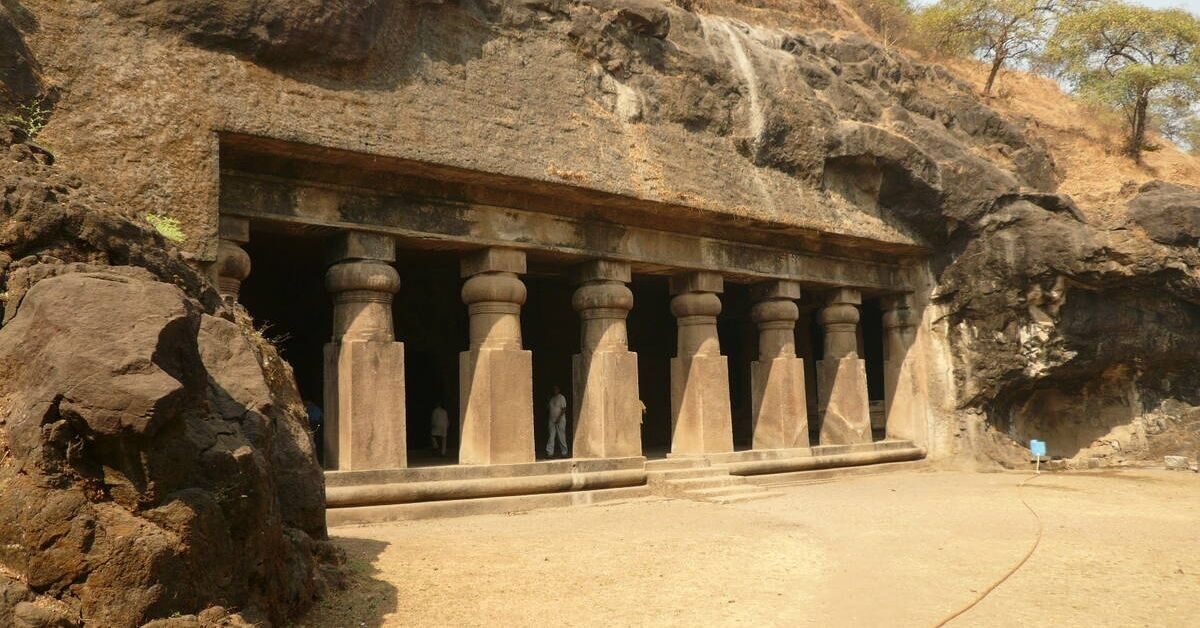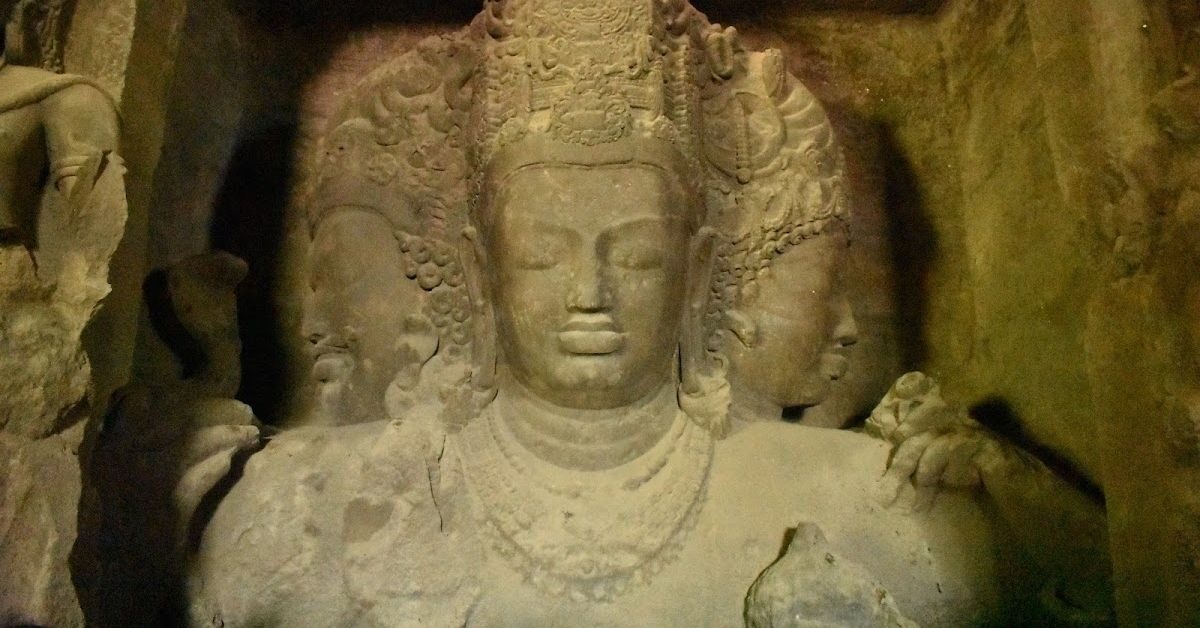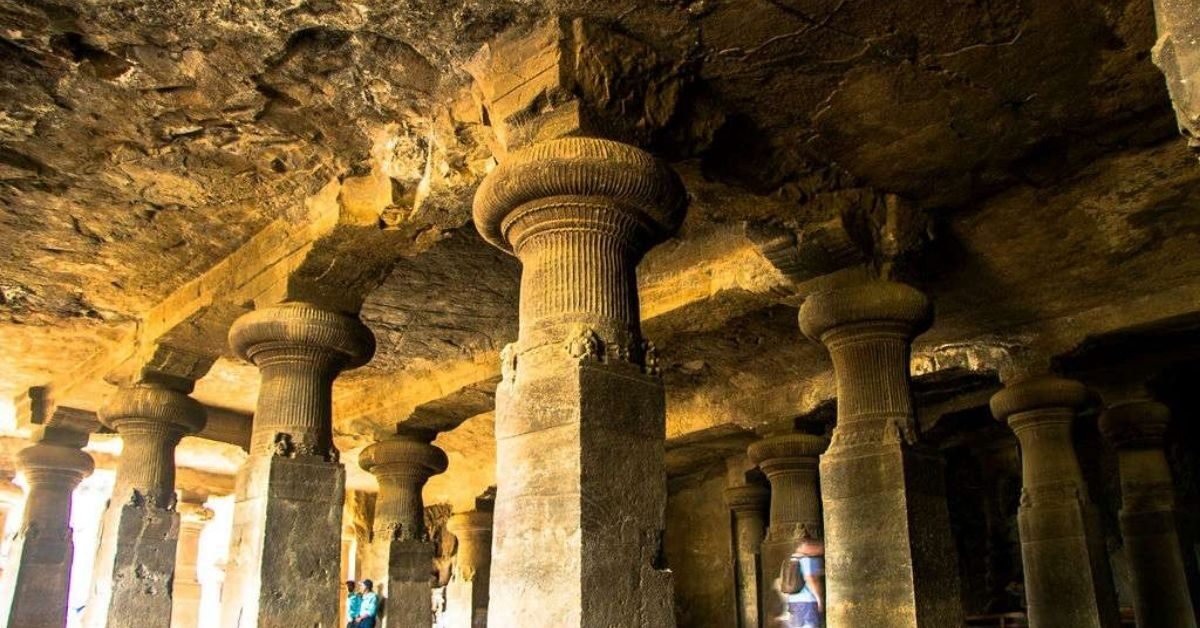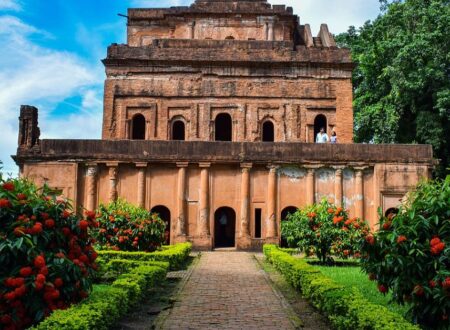Why do monks meditate in a cave? Why did the greatest yogis, thinkers, and spiritual masters use to isolate themselves in a cave for years on end? There must be something! Actually, it is. Caves provide a certain sanctity that is conducive to a meditative state. Caves, whether natural or man-made, are devoid of the influences of the materialistic world. There are no kings, queens, soldiers, businessmen, traders, or village folks. Neither is there any evidence of any kind of civilization? A cave is a perfect environment for one to focus on what truly matters to them i.e. their connection with the Universe/God/Source. In this blog, we shall discuss one of the greatest marvels of Indian Architecture & Indian Art i.e. the Elephanta Caves.

FUN FACT: To this day, the phrase ‘living under a rock’ means to be totally cut off from the world. Ever wondered where that phrase came from?
Fond of cool architecture? Read up on Diu Fort: The Enrapturing Architecture
Elephanta Caves: The Marvel of Indian Architecture
All in all, there are 7 caves that make up the totality of the Elephanta caves. All of these caves display intricate sculptures, murals, and statues of Lord Shiva in his various forms. Lord Shiva is said to be timeless and much of his life story has been well documented in our scriptures. The Elephanta caves show the various stages of his life as well. That’s what makes these caves a truly wondrous sight to behold. A life (at least a part of life) of the Adiyogi, sculpted in stone for generations of seekers to see.
Buddhist & Vaishnavism Connection to Elephanta Caves

You may be unaware of this but the Elephanta caves also have connections to Buddhism and Vaishnavism. You can find statues of Lord Vishnu, Brahma, Goddess Durga, and Lord Ganesha inside the caves as well. On the other hand, before the Brahmans came to the Elephanta caves, it is believed that Hinayana Buddhists occupied the caves and they raised a large stupa to honor Gautama Buddha. Many archaeologists have discovered stupas of varying sizes here. You know what, I stand corrected, the Elephanta caves seem to be a cocktail of various cultures, religions, and beliefs.
Who do the Elephanta caves belong to then? Nobody knows to date and it is this mystery that attracts thousands of visitors all over the planet to its steps. No one knows who made these caves, no one knows for what purpose were these caves originally made.
Suggested Read: Chola Temples – An Ethical Equator In Indian Heritage
Why is it called ‘Elephanta’ caves?

Originally, this magnanimous piece of Indian architecture was called the ‘Elefante’. It was named as such by the colonial Portuguese because when they first came to the island, they were greeted by an Elephant statue at the gates of the caves.
With time, the Elefante became the Elephanta caves. Neat, eh? Now, UNESCO has declared it a World Heritage Site which is maintained by the Architectural Survey of India.
Where is it located? How can you reach the Elephanta caves?

The caves are located at the Elephanta islands, near the Mumbai harbor. The only way to reach them is by the ferry which operates every day from 9 AM to 2 PM, except on Mondays. Mondays are when the caves remain closed for public visits. You can take the ferry from the Gateway of India.
Whether you are coming from India or from any foreign location, Mumbai is very well connected by road, rail, and air. So, getting to the Elephanta caves won’t be a hassle.
Can’t visit due to travel restrictions? Take a virtual tour here!
Best time to visit Elephant caves

The best time to visit this awesome piece of Architecture in India is between November and February. Try to avoid visiting between June and August since it is Mumbai’s peak rainy season and the sea becomes unpredictable.
Conclusion
So there you go, I hope you enjoyed my take on this Architecture of India, the enigma that is the Elephanta caves. If this blog has made you even a little bit curious about the caves, then I consider it a success. Just remember, if and when you visit these caves, be mindful of a few things. Do NOT desecrate the walls since it can get you in jail. A lot of the statues have been defaced and destroyed, so be careful while exploring the site and as always, be courteous towards the locals.
If you think I left something out, leave a comment down below! Happy travels 🙂
Follow India Chalk on Instagram for more amazing travel content. You can share your travel story with us. Reach out to us on email at contact[at]ndiachalk[dot]com. This blog is curated by India Chalk and written by Aishwarya D.






